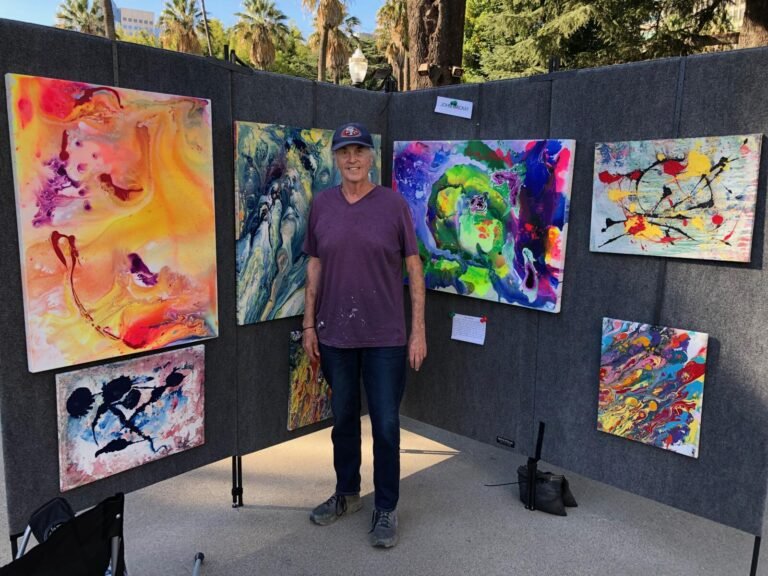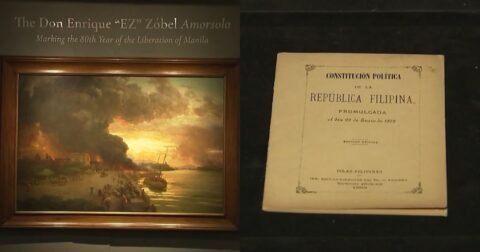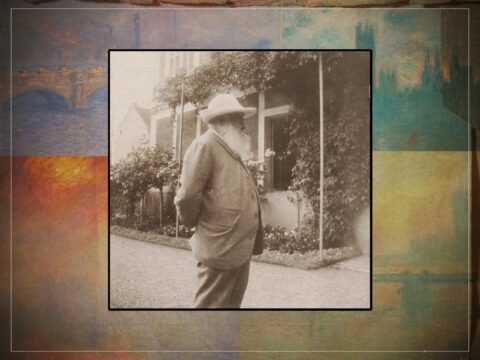The paintings of the late John MacKay, former owner of MacKay’s Nursery, will be featured in an exhibition at La Haye Art Center in Sonoma.
Destruction and disruption caused by the 2017 wildfires presented a host of major challenges to Sonoma Valley residents, but to the late John MacKay, they also instigated a creative turning point.
“The fires were such a devastating event for the area and really shook people up in ways that I still resonate,” said Amy MacKay, one of his daughters. “My dad said that for him, the experience caused a ‘profound emotional shift.’ The stark reality of destruction, of beauty and life erased in an instant, rekindled a deep urgency to return to painting. From there, he established an outdoor studio, and began embracing the unpredictability of weather, wind and ash as collaborators in his renewed process.”
Many of these paintings will be included in an exhibition, “John Green MacKay: Sailor,” at La Haye Art Center in Sonoma from 3 to 6 p.m. Saturday, June 14.
John, who died on March 1, 2025, was probably best known as co-owner, with wife Star MacKay, of MacKay’s Nursery in Sonoma, but he had an adventurous, creative spirit that was evident in all his work, including his art.
“After my dad passed in March, I knew immediately that the best way to celebrate him was to share his art,” Amy said. “We have a lot of his paintings in storage. I wanted to extend them out to all the people who love and appreciate him and for them to be able to honor the creative and joyful spirit that he was.”
An artist herself, Amy has a studio in the Los Angeles Fashion District and teaches painting and drawing at Santa Monica College and the University of California, Riverside.
“My dad was always an incredibly supportive person and my biggest cheerleader,” she said. “I would say his presence and encouragement was the biggest influence on my art. His enthusiasm was really infectious, and he always seemed enlivened by work that brought a spirit of community, experimentation and play.”
She said that in his own paintings, John was often drawn to themes related to nature and music — particularly rock ‘n’ roll — but in some ways, the process of creating felt more important than his subjects.
“The liquidity of the material feels like an important part of this,” Amy said. “Pouring, brushing and scraping paint across surfaces , he worked intuitively, often in short spurts, allowing chance and gesture to guide each composition. Pieces would often transform in the process of drying, and he always seemed so thrilled to discover how and where the image would evolve between different painting sessions.”
She identified a couple of distinguishing features of his paintings.
“I think he had a really gorgeous sense of color, and his varied approach to mark making and layering created a uniquely energetic and atmospheric space,” Amy said.
Shortly before he passed away, John participated in a couple of exhibitions honoring veteran artists and attended a military veterans art day at the California State Capitol Building in Sacramento.
Amy said up even toward the end of his life, her father always had a deeply imaginative, creative spirit.
“He was a natural storyteller and was always writing in addition to making paintings,” she said.
John was born in Seattle on March 10, 1946, and after moving around the country during his childhood, his family eventually settled in Kentfield. After attending middle school and high school in Marin County, he enrolled at the University of Puget Sound in Tacoma, Washington.
He also soon cofounded a light show company and with the legendary promoter Bill Graham as his mentor, eventually created live psychedelic visuals for rock concerts at venues including The Fillmore and Winterland in San Francisco.
When describing his initial light show work to Amy, he would picture himself high up in the rafters, using a light projector and liquid dye to make live visuals for music.
“Apparently, he eventually connected with other people doing similar things in the Bay Area in the ’60s,” she said. “This all definitely influenced the way he made art later in life. The experimental ‘live’ energy felt very important to his process.”
During the 1960s, John also served in the U.S. Army, working for the film communications department in South Korea. In addition, he was a Peace Corps volunteer, teaching agriculture, in Swaziland (now Eswatini) from 1974 to 1976.
Upon returning from his Peace Corps stint, he studied horticulture at Sonoma State University, receiving a master’s degree.
“I think he saw growing plants in connection to a broader interest in philosophy and spirituality … the practice of tending to something growing and bringing together all these elemental parts of nature to synthesize something nourishing,” Amy said.





